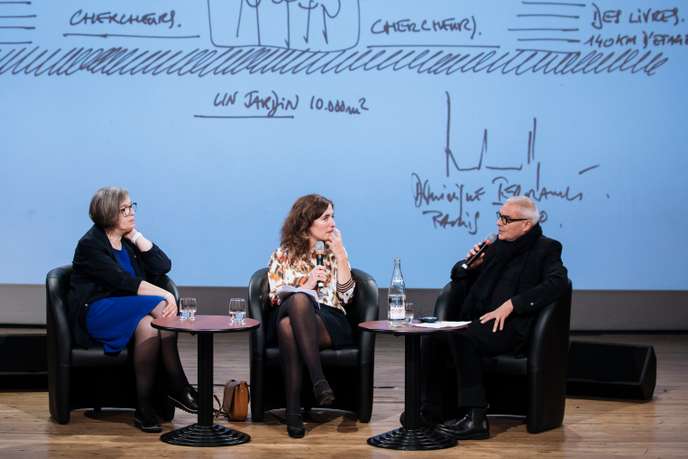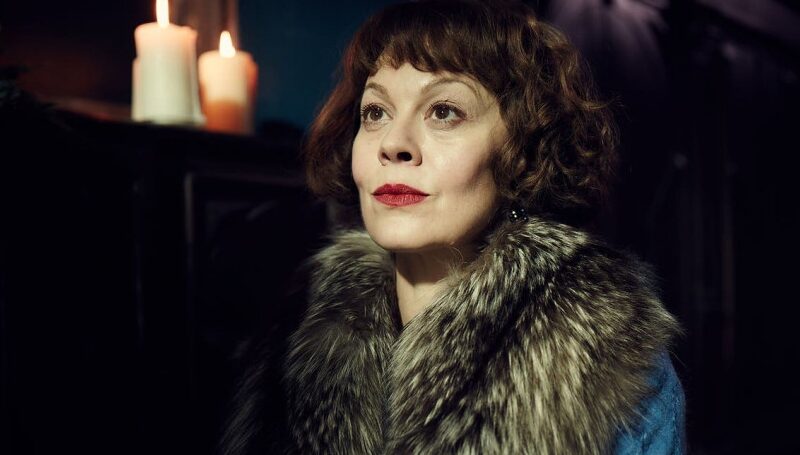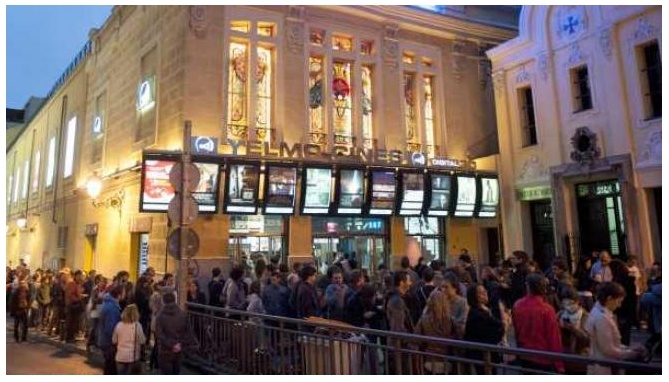In appearance, everything seems to oppose these two stars of architecture, the Dutch Nathalie de Vries and the French Dominique Perrault, who were invited, Saturday, October 5, at the World Festival, to discuss their dreams “for the city of tomorrow.” At first, an uninhibited pop aesthetic made of exploded geometry and colorful effusions. In the second, a radiant elegance, combining a refined geometry and a pronounced taste for monumentality. Two identifiable aesthetics, two architectural languages that have in common to draw from the imaginary, to draw inspiration from the dreamlike material.
For Dominique Perrault, architecture has this “capacity to create possibilities” . And the architect evokes, in front of the captivated public of the amphitheater of the Opera Bastille, the visionary character, thirty years ago, of the François-Mitterrand library, “most durable building of all Paris”, which , with ” more than one hectare of cool island” and “200 000 m 2 in the basement”, corresponds to the models “after which all the Réinventer Paris contests are running today. “His only regret: not being able, at the time, to use on the towers of the photochromic glasses which are tinted according to the sunshine. The future headquarters of BNP Paribas Real Estate, in Boulogne, will be able to be equipped.
Silodam, built in Amsterdam in 2002, looks at first glance at an array of containers of different colors
Like echoing, Nathalie de Vries in turn evokes the “role of the architect”, held “to try new materials, to move forward, to set milestones. “ She tells how, with his associates founders of the agency Winy Maas and Jacob van Rijs (MVRDV), she dreamed and realized – well before the mix of uses becomes a rising star – the multifunctional Silodam building, built in Amsterdam in 2002. Erected at the end of a dock like a moored boat, the 157-unit project, as well as offices, shops and common areas, looks at first glance at an array of containers of different colors.“The idea was to show that we can introduce variety into the same building, to meet different people, different needs,” says the Dutch architect.
Mingle populations and uses
For both, the city of tomorrow is a city where life is good, where there is “joy”, “where one spares long journeys to work” … a city that no longer has dormitory neighborhoods, single-passage neighborhoods, but favors “the inscription of a life in each place” . Like the dream of Dominique Perrault to transform the Ile de la Cité, in Paris. A space that, underlines the architect, “lost, even before the fire of Notre-Dame, all visibility, where we just pass. We must revive this public space and share all the elements of the extraordinary architectural heritage it offers: the courthouse, the hospital and a cathedral “. For him, the reconstruction of Notre-Dame is a great opportunity “to reappear the island of the city as a place of life. “
“Frugality is good, but it’s not about building organic vegan bobo! Dominique Perrault
The city of tomorrow is a city where people and customs mix, says Nathalie de Vries. Pune, in the state of Maharashtra (India), saw the birth of Future Towers in 2018, a complex of more than 1,000 homes built by MVRDV and designed in a single building. A singular structure with varying heights that looks like a mountain range. Comprising dwellings of 45 to 450 m 2 , the ensemble promotes a non-discriminatory mixture between different categories of inhabitants. And, in the facades, there are openings in bright colors, spaces where are proposed common activities (yoga, minigolf, playgrounds for children, etc.). “We really wanted to create collective spaces inside the building”, says Nathalie de Vries.
For both, the city of tomorrow will be made with new materials, but it is certainly not a frugal city of materials. “Frugality is good, but it’s not about building organic vegan bobo! loose Dominique Perrault. It is necessary to develop new materials, but it is also a question of rethinking their implementation in a much more ecological and economical way. And here, the construction industry is late. “ And Nathalie de Vries to abound : ” Our way of building must change. The idea is not necessarily to use less materials but think recycling, reuse, adaptable building. Think buildings that can be transformed, be multi-purpose … “



